Visitors and pilgrims from all over the world visit the sacred and spiritual places called Monasteries. India has a famous spiritual history and culture and houses several monasteries. Most of them are found in Northern India and North-Eastern India. The most famous monasteries in India have mostly visitors and pilgrims who are followers of Buddha.
The monasteries are known for their peace and visitors take blessings and offer prayers going there. Many Buddhist monasteries are situated in serene surroundings in the backdrop of nature. This makes the trip an enjoyable one and even rejuvenates the mind, body & soul.
Here is the list of 10 most popular monasteries in India.
1- Hemis Monastery, Ladakh
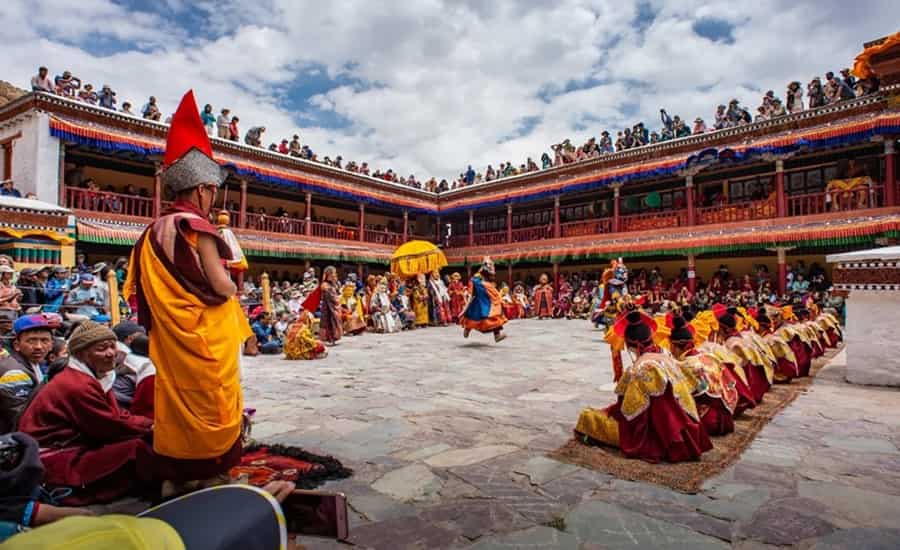
Situated in Ladakh – the land of the high passes, this widely visited monastery was founded back in the 1600s. The monastery is situated on the western side of the River Indus on top of a mountain. Popular for the large collection of paintings, this monastery is of the Red Sect of Buddhism or ‘Dugpa Kargupta’ order.
There is a famous Hemis Tshechu Festival which is the best time to view the Thangkas and other art forms, like applique studded with pearls that portray the Guru Padmasambhava picture. The monastery houses some of the best Stupa made from expensive and precious metals like silver & gold apart from a ‘Lord Buddha.’ copper glided statue.
- Suggested Tour: Hemis Festival Buddhist Tour in Ladakh
2- Namdroling Nyingmapa Monastery, Coorg, Karnataka
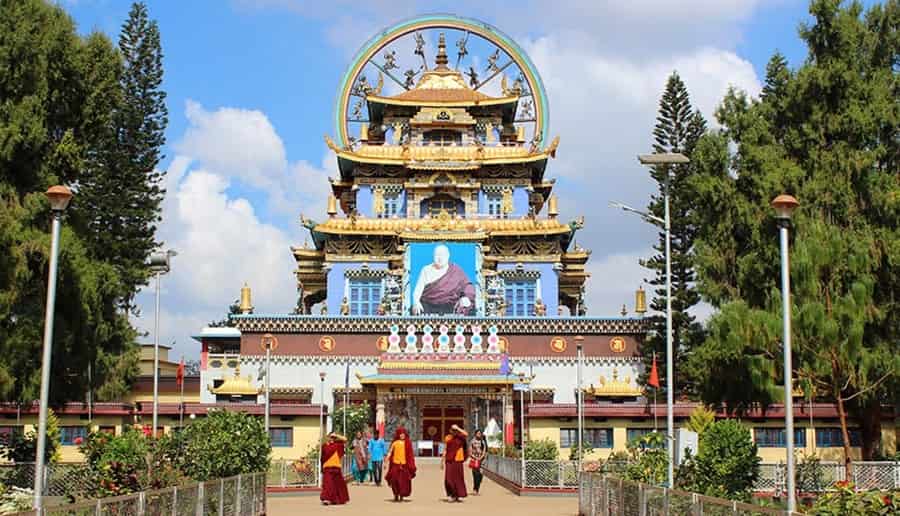
His Holiness Pema Norbu Rinpoche came to India from Tibet accompanied by a few monks and Rs. 300 cash. He laid the foundation stone in the first area of 80 sq. ft. That is now a structure of 3 stories. The Namdroling Monastery signifies the teachings and wisdoms and compassions of Buddha and is dedicated to the Palyul Lineage of Nyingma School of Tibetan Buddhism.
This is a must visit spiritual place for a peaceful experience of a lifetime. Situated amidst the fields of sandal of Karnataka, it was bequeathed with the name Namdroling by His Holiness the Dalai Lama who consecrated the place. Now, it is home to almost 5,000 nuns & monks.
3- Tabo Monastery, Spiti Valley, Himachal Pradesh
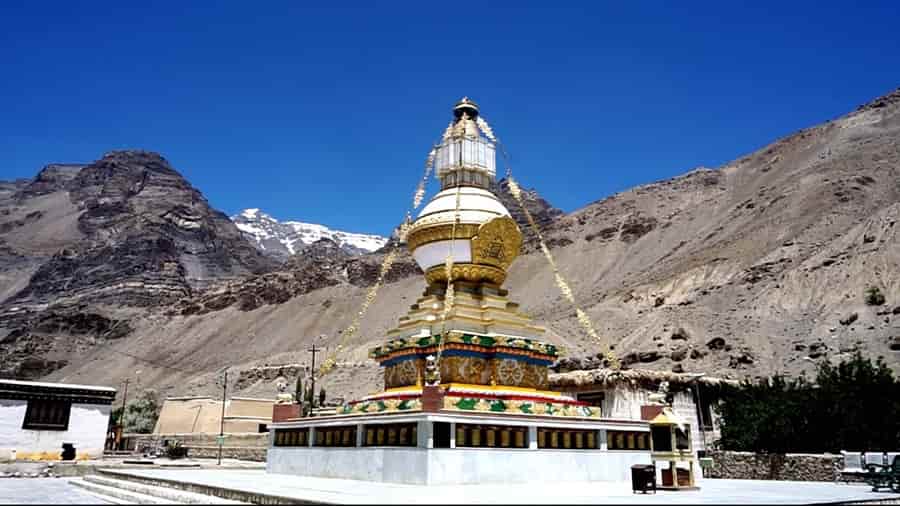
A Buddhist king Yeshe O’d who was also a royal lama founded the Tabo Monastery in 996 AD. With renovations, by late tenth century the region spread right from Ladakh to Purang, most of West Tibet. A decorative royal monument is centered in the Tabo monastery that tells of its ideology of Patrons – Legitimacy, Piety & Status. The main temple consists of walls with massive writings of political legitimacy and culture integration.
The entry hall on the northern wall bears costumes & names of monastic community and the southern walls bears its aristocracy. A study of these show the local culture when the Tabo Monastery was founded. The Monastery and principal personalities play a significant role in the re- establishment of Indian Mahayana Buddhism in Tibet.
4- Ghoom Monastery, Darjeeling, West Bengal
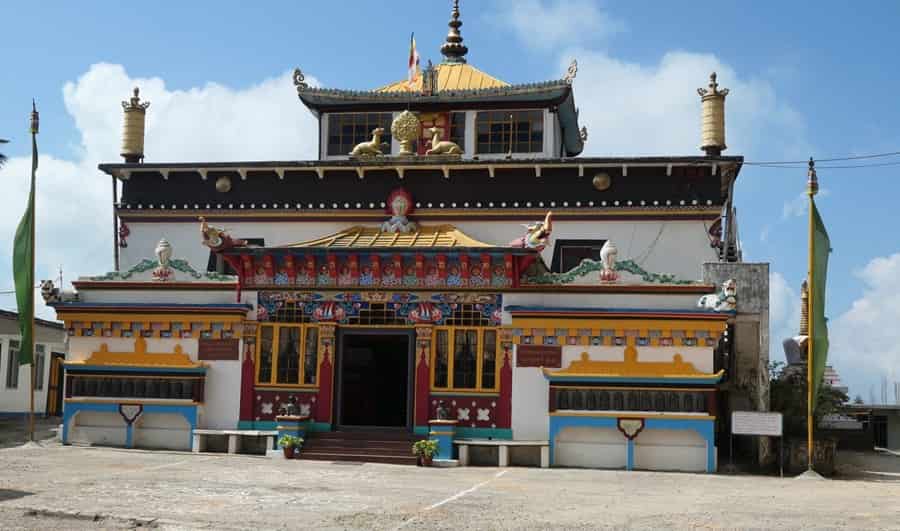
Popularly known as Yiga Choeling Monastery, it stands at 8,000 ft. And is located in Ghoom, 8 km from Darjeeling, West Bengal. The Monastery is most popular for the 15 ft high statue of Buddha. called ‘Maitreya Buddha’. It belongs to the ‘Yellow Hat Sect or Gelukpa and around 60 monks can take shelter there. A revered worship place for Buddhists, several tourists and pilgrims from all over the world visit the place renowned for the ornamental manuscripts of Buddha.
The ‘Coming of Buddha’ statue is 4.7 meters tall and is the best place to view the mighty Kanchenjunga especially at sunrise at 5. am. This is one of the oldest monasteries. in Tibet and is a repository to ancient translations of Sanskrit works. A festival called ‘Buddha. Jayanti is celebrated in the Monastery with South Asian architecture that dates back to the 3rd century.
5- Enchey Monastery, Gangtok, Sikkim
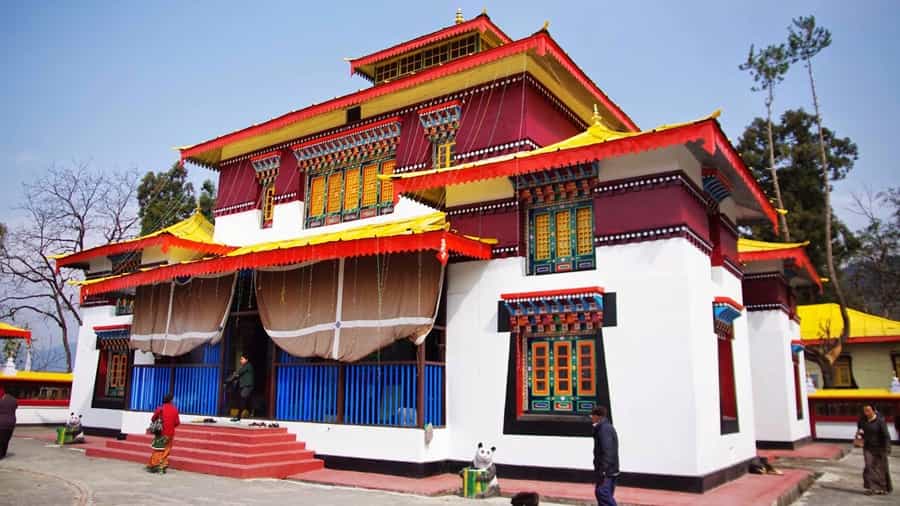
The name of the monastery directly translates to ‘Solitary Monastery’. It is believed that Lama Drupthob Karpo who had flying powers, flew all the way from Maenam Hill in South Sikkim. The monk then constructed a hermit site near the ancient monastery that is nearly 200 years old. Situated 3 km from Gangtok, it belongs to the Nyingma order of Vajrayana Buddhism and presently houses 90 monks from this sect.
The Gompa houses many significant objects of religion, Gods & Goddesses too. There is colorful vibrancy during the month of January when the ‘Chaam’, a dance form with ‘masks’ is organized at the monastery.
- Suggested Tour: Darjeeling, Gangtok & East India Buddhist Temple Tour
6- Mindrolling Monastery, Dehradun
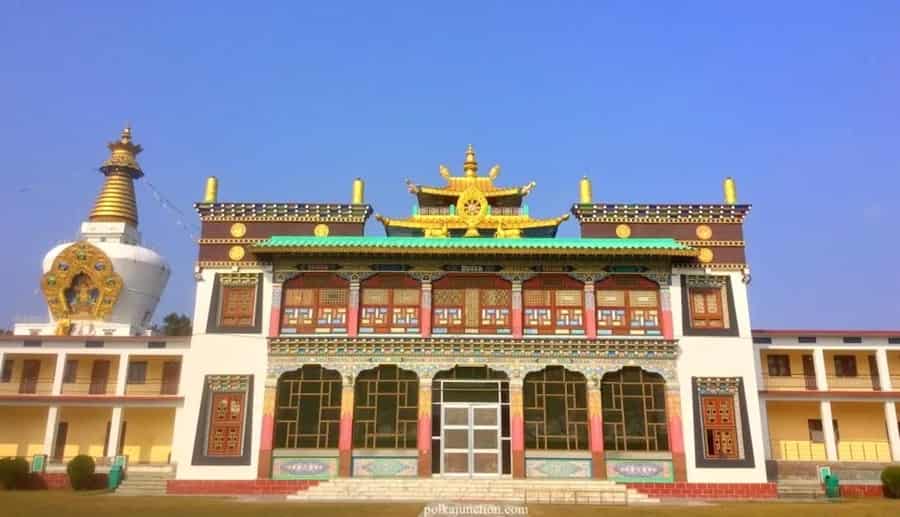
This is one of the largest existing Buddhist centers situated in the picturesque foothills of the Himalayas dating back to the early seventeenth century. Many rituals dances & performances are carried out on specific dates that add color and vibrancy to the monastery.
Some of the ritual dances include the Great Tse Chu Cham (January), the Kagyed Drubchen Cham, a spectacular ceremony lasting 10 days (March), Thugje Chenpo – Red Chenrezig, an anniversary ceremony (March) and also the colorful consecration ceremony of Statue Guru Padmasambhava, etc. These are only a few of the several annual shows and anniversary celebrations / ceremonies and dances at Mindrolling. Priests, teachers and monks Mindrolling org believe the center to practice pure form of Vajrayana Buddhism Dharma.
7- Tsuglagkhang Complex, Dharamshala
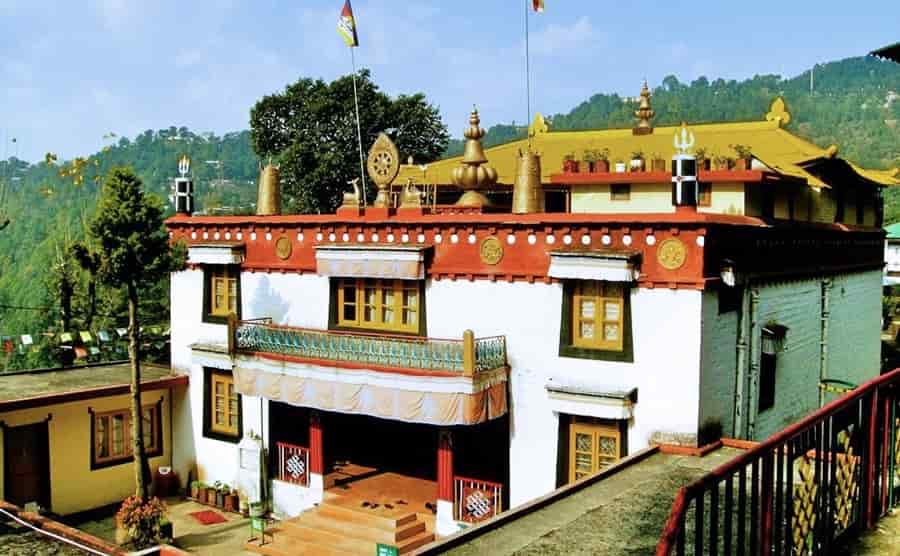
The Tsuglagkhang Complex houses the residence of the Dalai Lama (Photang) is situated over the McLeod Ganj. There are many sites and spiritual activities to do there. Tibet Museum, Namgyal Gompa and the Tsuglagkhang Temple are there in the pilgrimage site. The entrance gate is at the foot hill and visitors to the temple spin the prayer wheels on the circuit of the fully functioning temple.
Tibet Museum plays a video and moving pictures while Namgyal Gompa sounds chaotic as you listen to an active debate by Monks inside. Another interesting activity is to walk in a clockwise direction of a sacred site known as ‘Kora’. The woody terrain has splendid views of the peaceful area with prayer wheels and several shrines along the circuit. Although not allowed, if you are lucky, you may view the main Dalai Lama there!
8- Phugtal Monastery, Ladakh
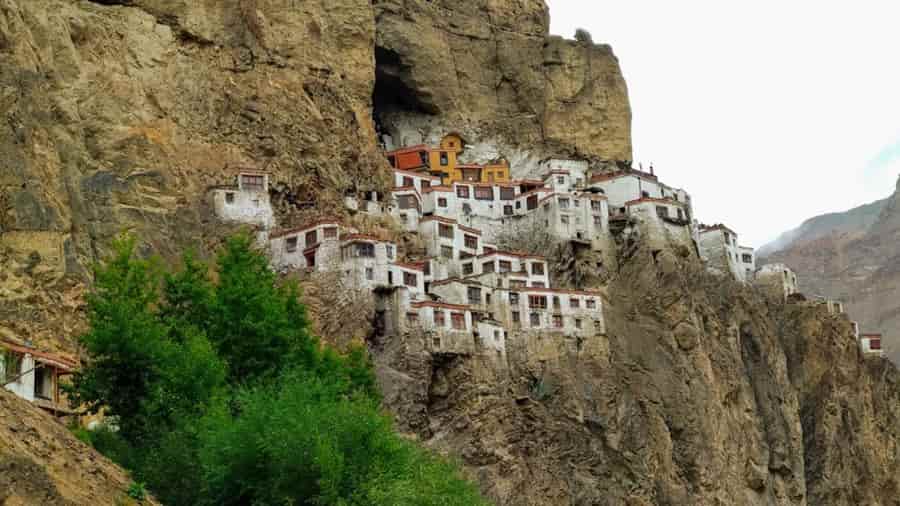
This distinct monastery dates back to early twelfth century when founded by Gangsem Sherap Sampo situated in Zanskar Valley, Ladakh. The Phugtal Gompa is somewhat shaped as a ‘honeycomb’ as it is built into a cliffside. The site of interest is the close by river Lungnak.
The isolated monastery, made from mostly mud & wood houses a library, prayer rooms & accommodates 70 monks. It is an interesting and adventurous activity as you trek along the 7 km route starting at Purney Bridge along – Padum Manali route.
- Suggested to Read: 8 Must-Visit Buddhist Monasteries in Leh Ladakh
9- Zang Dhok Palri Phodang, Kalimpong
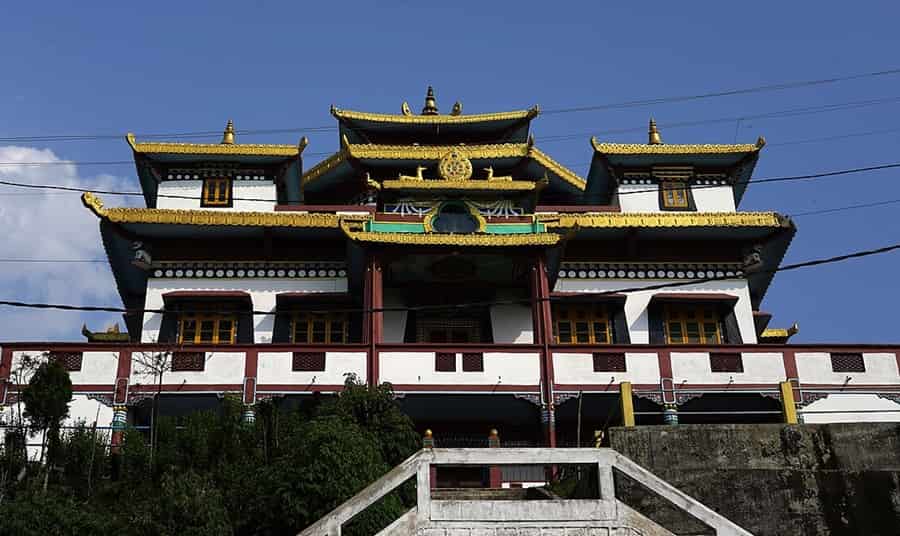
Sitting on top of the Durpin Hills in the picturesque region of Kalimpong, West Bengal, the Dalai Lama visited and blessed this serene monastery in the year 1976. as the monastery is located on top of the hill it gives a splendid view of the mighty Kanchenjunga mountain. Visitors may also see the beautiful River Teesta flowing alongside.
The site is of great relevance to followers as the monastery preserves several ornamental Buddhist scriptures and Kangyur (around 108) scriptures from Tibet. There are large paintings inside giving an appearance of 3D image in the big ceremonial Hall. Set in the middle of peaceful surroundings, the visit to this place gives rejuvenates the mind & soul.
10- Pemayangtse Monastery (Sikkim)
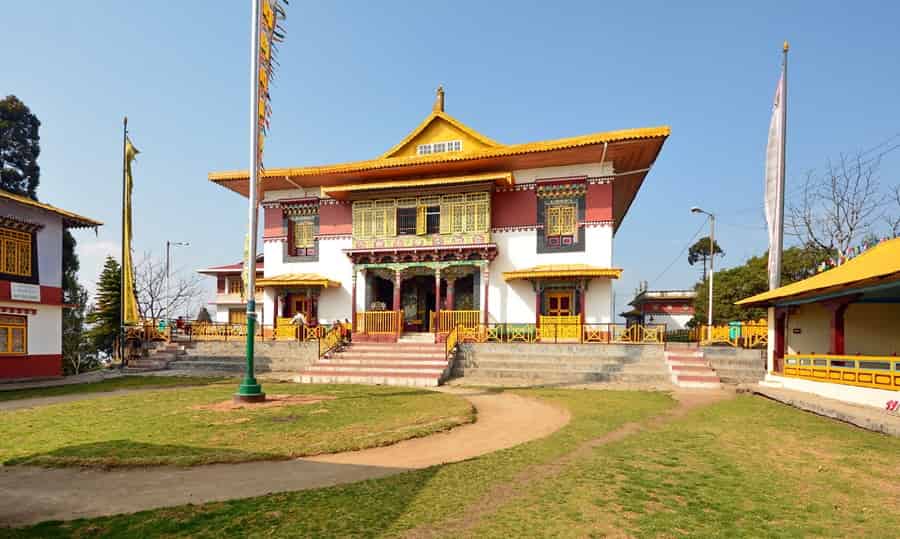
The great Pemayangtse Monastery has been keeping a constant vigil over the town of Pelling for over 300 years. One of the oldest and the most important monasteries in Sikkim, it belongs to the Nyingma-pa-sect.
The monastery’s monks are generally chosen from the Bhutia community, who are supposed to be of Tibetan ancestry. Such is the stature of the monastery that its head monk had the unique authority of anointing the Chogyals of the Sikkim monarchy with holy water.Only the monks of the Pemayangtse monastery are conferred the title ‘ta-tshang’, that means ‘pure monks’..
It’s a great place to have a glimpse of the mighty Kanchenjunga, the third highest peak in the world.
- Suggested Tour: India Buddhist Tour Packages
Conclusion
These monasteries not only represent the diversity and richness of Tibetan Buddhism in India but also reflect the deep cultural and spiritual heritage of the regions they are located in. Each monastery, with its unique history, architecture, and practices, contributes to the vibrant tapestry of Indian spiritual life. Whether through their festivals, rituals, or serene environments, these monasteries offer profound insights into Buddhism and its enduring legacy in India.

 Call
Call WhatsApp
WhatsApp Enquiry
Enquiry